“Tina Turner signed it with a flick knife after he recorded for her in London. Then they all went out to dinner”: What the auction of Jeff Beck’s best-loved electrics tells us about the late guitar icon
We join the experts from Christie’s auction house to take a closer look at the ‘Oxblood’ Les Paul, ‘Tele-Gib’ and other historic instruments from Jeff’s career – and discuss the portrait they paint of a pragmatic, restless yet peerlessly gifted talent and his musical legacy

It can’t have been an easy decision.
In a brief statement about the forthcoming auction of Jeff Beck’s guitars in London, his widow, Sandra Beck, wrote movingly that: “These guitars were his great love and after almost two years of his passing it’s time to part with them as Jeff wished.
“After some hard thinking I decided they need to be shared, played and loved again. It is a massive wrench to part with them, but I know Jeff wanted for me to share this love. He was a maestro of his trade. He never lusted after commercial success. For him, it was just about the music.”
Encapsulated here, in these words of devotion, is perhaps all you need to know about Jeff Beck. Gold discs might have been welcome enough – but, for Jeff, the real riches were in the music. And what music it was.
When it comes to electric guitar, there will perhaps never be such eloquent expressions of yearning as Cause We’ve Ended As Lovers or Where Were You. A matchless maverick; a magician who conjured with six strings and a row of glowing EL34s; a cheerful heretic in the faithless church of chart success. Beck was all these things and more.
But his musical character can also be understood through the guitars he played, which is why we joined a trio of experts from prestigious auction house Christie’s – all of whom worked on the sale for Mark Knopfler’s guitars – to take a tour through Beck’s collection.
We sat down with Amelia Walker, specialist head of Private & Iconic Collections, Christie’s London; Kerry Keane, international consultant and specialist for musical instruments (who was also closely involved in preparing the Eric Clapton and David Gilmour collections for sale); and Caitlin Graham, consultant, Rock & Pop Culture (who also worked on the Gilmour sale), to lift the bonnet of Beck’s most iconic music machines and see where he found all that tonal horsepower…
Get The Pick Newsletter
All the latest guitar news, interviews, lessons, reviews, deals and more, direct to your inbox!
First up, how much of Jeff Beck’s musical life – as expressed through his guitars – does the sale cover? It seems to form a picture of his whole career, almost.
Amelia Walker: “It really does; it covers his entire career. So, with the exception of some instruments that you know very well are no longer in his collection, like, for example, the Yardbirds Esquire that he famously swapped with Seymour [Duncan] in 1973, there are all the greats that you can imagine from across his career.
“From The Yardbirds, there’s the first Les Paul he bought in 1966, all the way through to guitars that he only acquired for his last tour and that he played on the last tour. So it’s really his entire, almost 60-year-long career. It’s guitars, a couple of other instruments, a ukulele, a violin – that sort of thing – that he had at home, a few basses that he had purely at home. Then amps, pedals, various travelling cases, but all to do with instruments.”
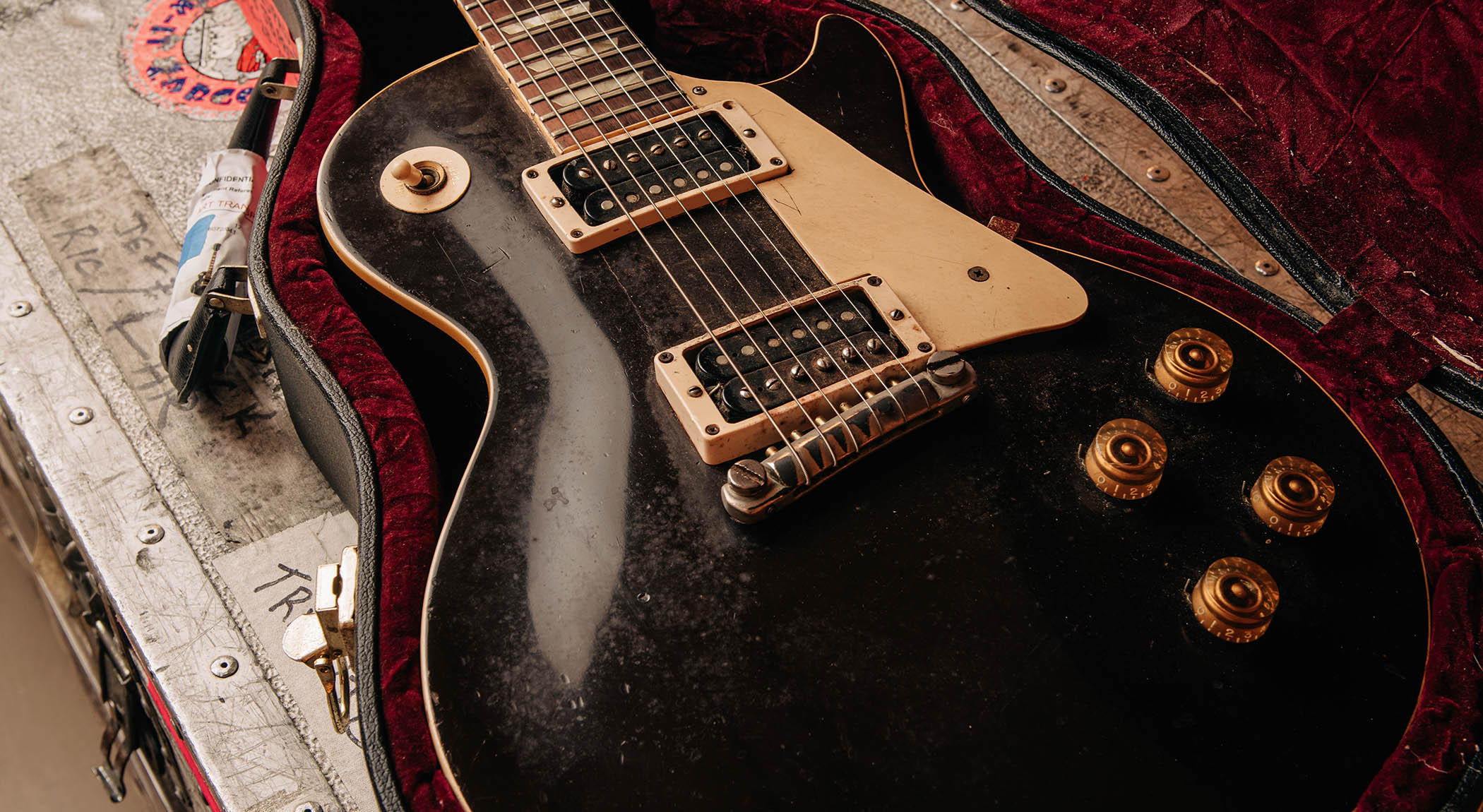
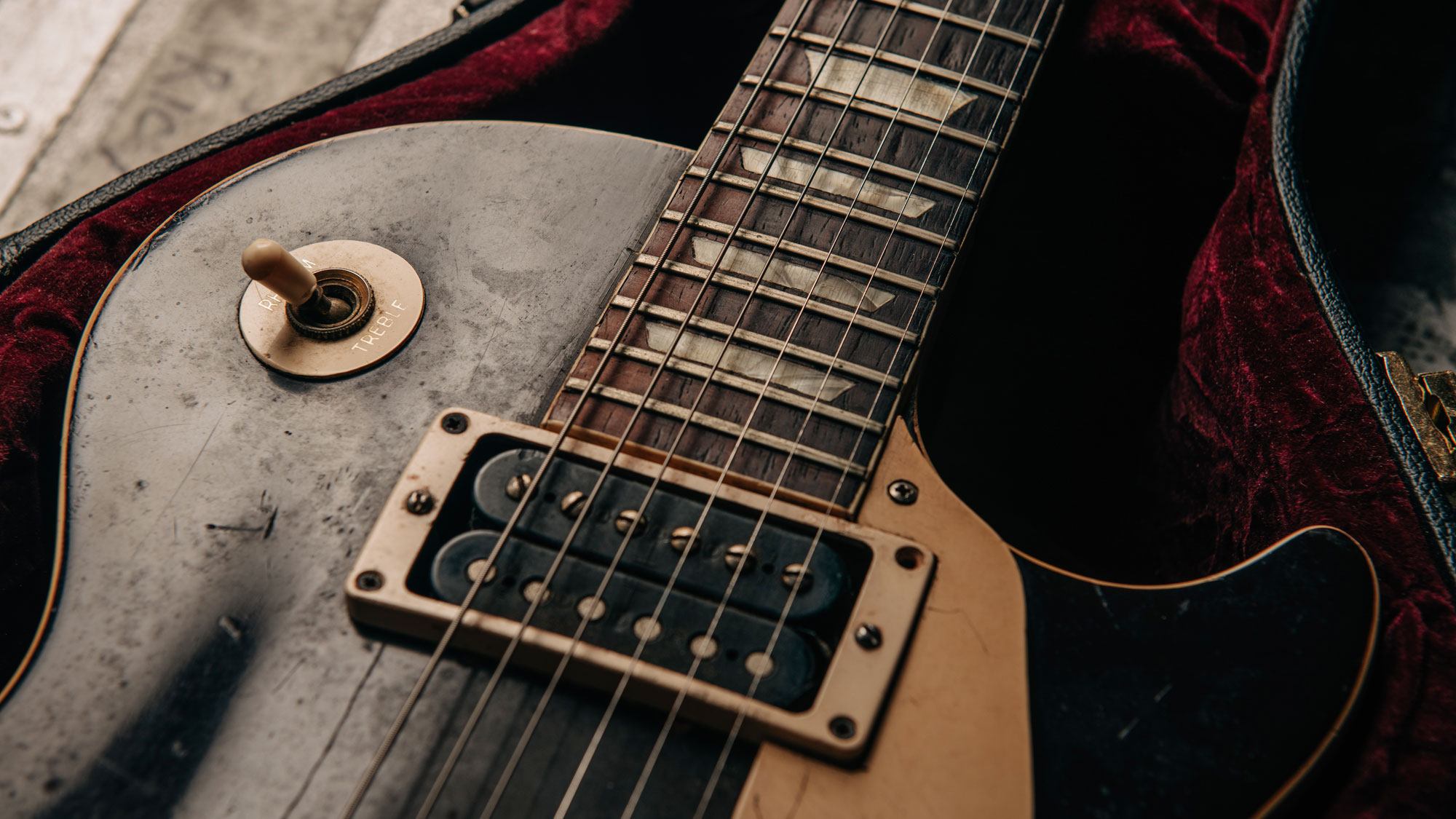
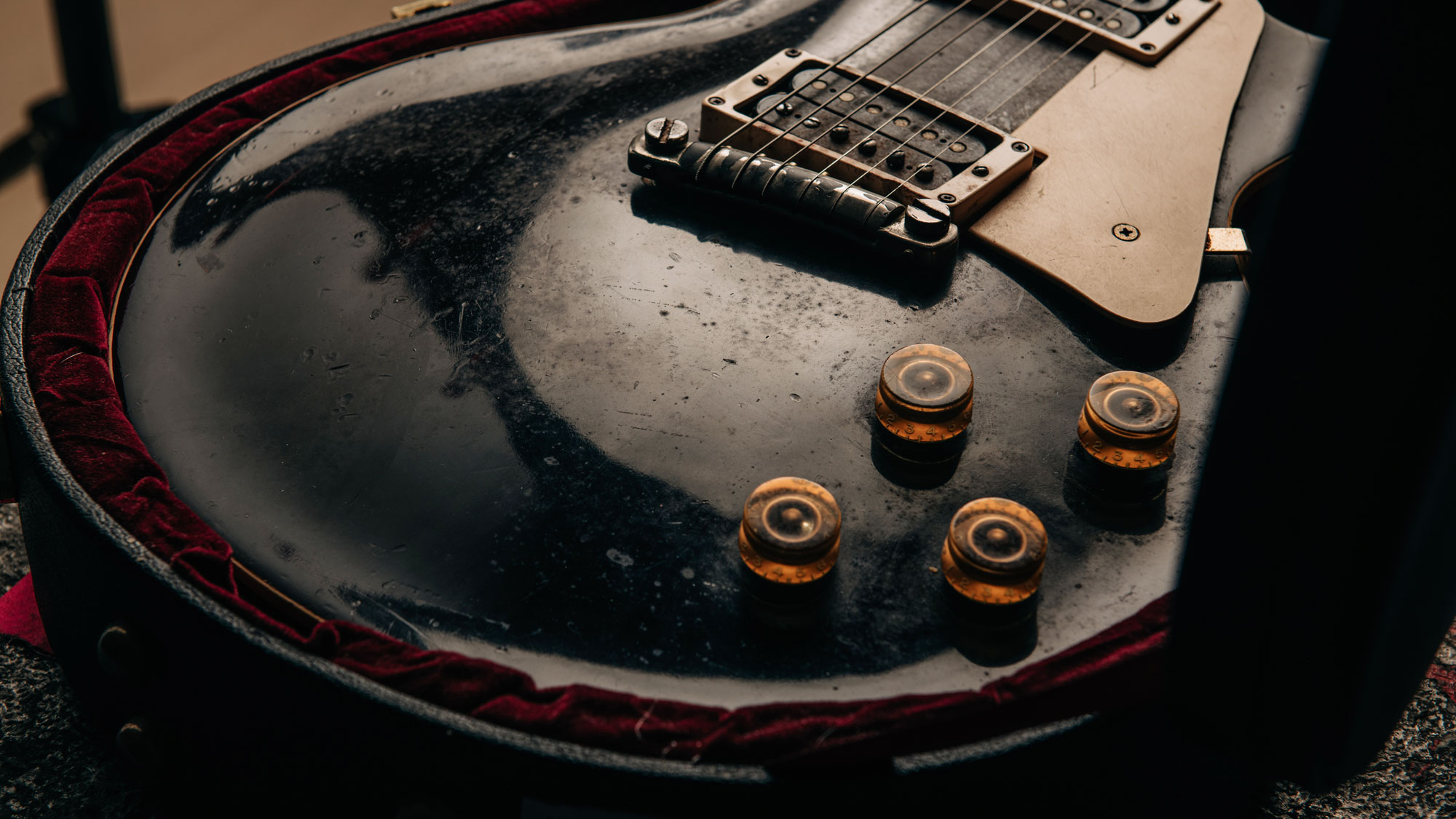
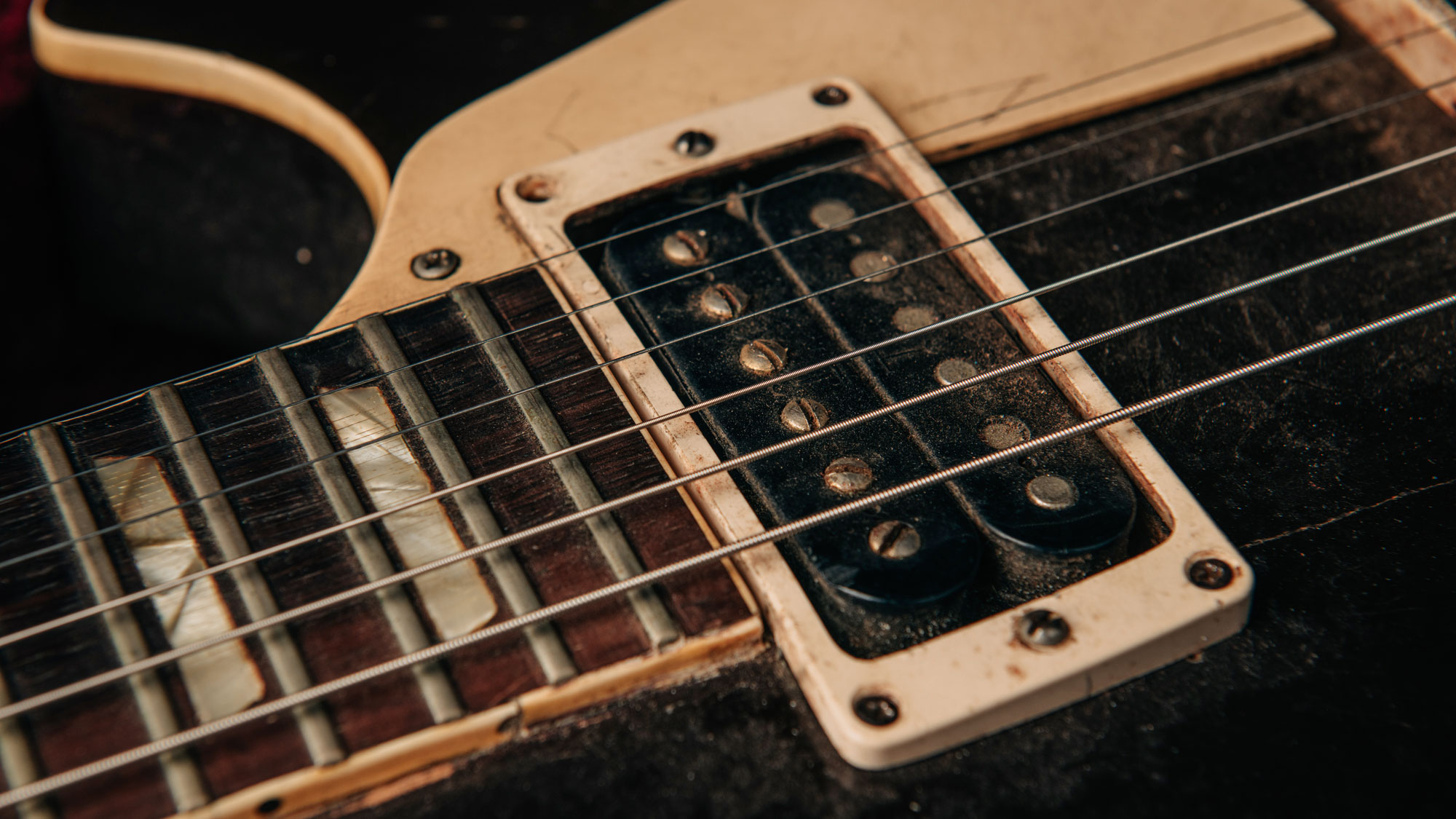
Let’s start at an obvious place with what is arguably the most iconic of all his guitars, Jeff’s ‘Oxblood’ Les Paul.
Amelia: “Well, I’m going to caveat the conversation with the fact that research is still live right now [at time of interview in late November of last year – Ed], so we are still formulating our full picture of these guitars.
“But we can say he was on tour with BBA [Beck, Bogert & Appice] in late 1972. And I think his search for a new Les Paul coincided with the ‘Yardburst’ getting damaged again – because it has had a few fair breaks, that poor guitar. So he was really looking for a guitar that could replicate that fat Les Paul sound. BBA was a loud band and that was their signature [style] – a power trio with a lot of volume.
“So he was passing through Memphis and went into this shop called Strings & Things, where he tried a few things and apparently even signed the door of the back office, according to some accounts, but he didn’t actually find anything that he wanted in the store. Then he contacted a friend of his who he’d met – a young fan, in fact – called Buddy Davis, whom he’d met a few years before and who had taken other guitars to show him.”
“The way Buddy has told the story is that Buddy drove Jeff around various hot-rod shops in Memphis, where he bought things for cars, but in his car he also had his guitar, the ‘Oxblood’, which Buddy had acquired from Strings & Things – the same shop in Memphis that Jeff had visited – where it was on sale because it’d been unwanted by its previous owner. Buddy hadn’t yet paid for it, however. The guitar itself had been owned by another guitarist.
There’s probably not a rock god guitar out there that isn’t wrapped in mythology at some level
“This guy had taken it into Strings & Things six months previously and said, ‘It’s a Goldtop. I want you to respray the guitar to match my shoes [laughs]. I don’t want these P-90s, either, I want humbucking pickups and I want a slimmer neck profile. Here you go.’ So they [Strings & Things] did all the modifications that we see now. Then, when he went back to pick it up, he decided he didn’t like it any more, and then Buddy Davis walks in, says, ‘I love it.’
“I think he was meant to pay $300 for it, or something, but he took it away on credit and actually hadn’t yet paid for it by the time Jeff called him. So then Jeff buys it directly from Buddy, before Buddy had even paid for it from the shop, and so I think he made a little profit. That’s the legend – and it’s a legend that has changed over the years…”
Caitlin Graham: “A couple of those stories are mixed up, if you read them from both parties, but we confirmed it with the guitar technicians [who were there] at the time.”
Kerry Keane: “As you know, there’s probably not a rock god guitar out there that isn’t wrapped in mythology at some level.”
When did Jeff begin using ‘Oxblood’ in anger?
Amelia: “By all accounts, I think he put it to use almost instantly…”
Caitlin: “It’s famously on the cover of Blow By Blow, but it wasn’t actually used as much as the Strat and, I think, the ‘Tele-Gib’ for the actual recording sessions…”
Amelia: “Yeah, it was used for one or two songs on Blow By Blow.”
Caitlin: “But it was definitely more like his primary performance guitar from that period onwards. There are obviously so many amazing photos of him playing it.”
What’s the general condition of ‘Oxblood’ today?
Caitlin: “It’s still in the condition that he left it. We haven’t cleaned it, which is lovely. It has definitely got an aura to it.”
Amelia: “I think we’ve put one string on because it only had five strings for about 30 years.”

With perishables such as strings, it must be tough to decide what must be untouched for originality’s sake and what absolutely must be replaced for the guitar to be able to be presented for sale.
Kerry: “Correct. It’s a narrow needle to thread. You want to honour the instrument, you want to honour the history, and at the same time it’s merely a static object if it’s not playable.”
Without a doubt, you pick this guitar up and you realise that it has been rode hard and put away wet. It’s a well-used instrument
Is there anything that leapt out about ‘Oxblood’ as you were preparing it for sale, Kerry?
Kerry: “Without a doubt, you pick this guitar up and you realise that it has been rode hard and put away wet. It’s a well-used instrument. As a guitarist and as a guitar maker, I immediately looked at those first alterations that were made from a Goldtop, fitting it with humbuckers, and how that bridge humbucking pickup is sort of jammed right up next to the wraparound bridge. There’s not even room there for the [pickup] surround; even the surround is bent so it can fit there.
“It was late ’53 when you first started to see these wraparound bridges. When you look inside this guitar, I don’t fully embrace the potentiometers as original, yet the ‘speed’ knobs appear from the period. The capacitors have certainly been changed. I would expect those waxy looking ‘grays’, and there has been quite a bit of rewiring, which is to be expected with all the alterations.
“Though the neck on the guitar is not as thick and as chunky as you would expect from the ’54, and for the simple reason that that neck has been replaced at some point. It’s certainly cobbled together. But at the end of the day, it’s a great-playing axe, no doubt about it.”
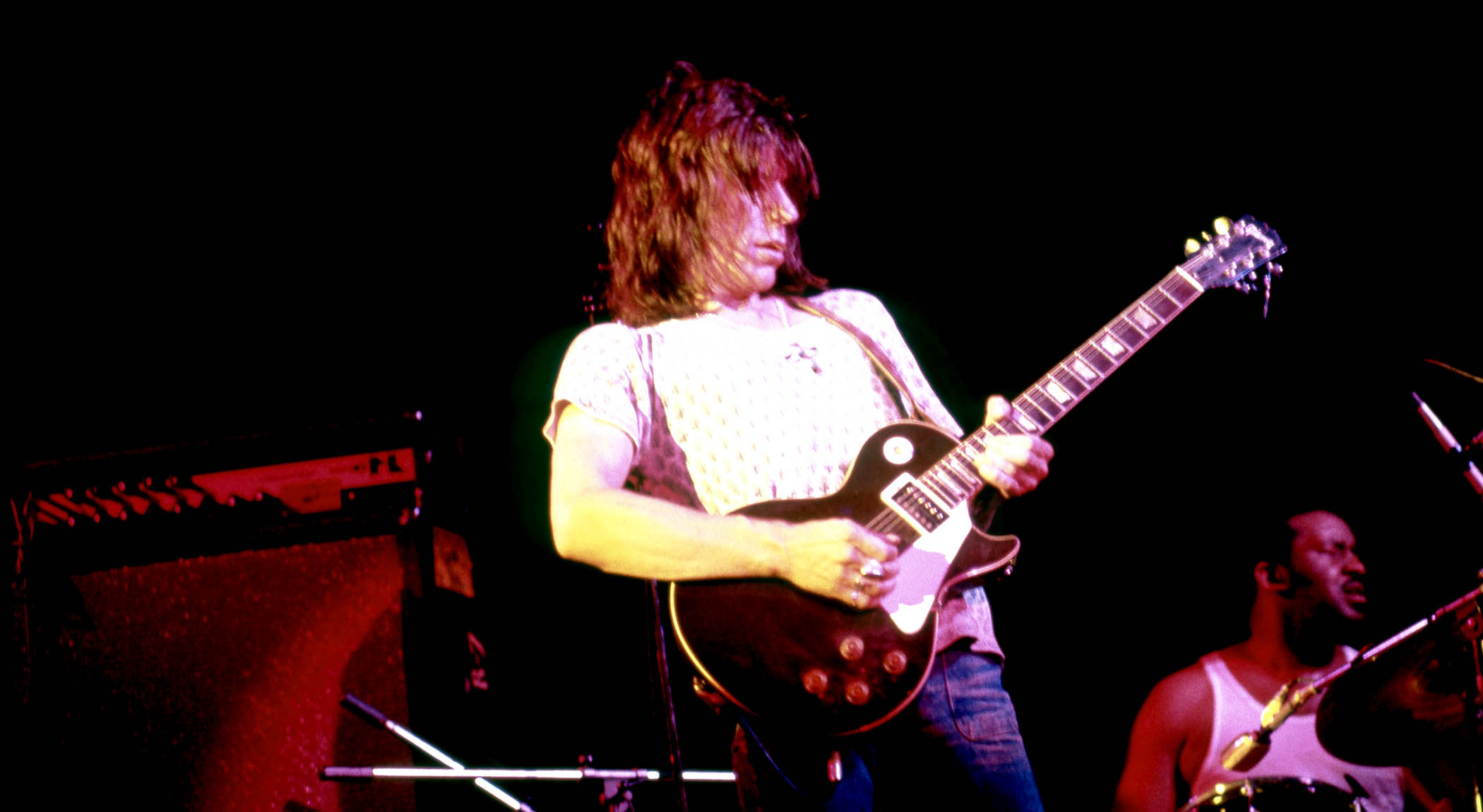
Were you able to determine what the pickups were? Are they PAFs or something other?
Kerry: “Both the pickup chassis are patent numbered. We didn’t fully pull them apart, but they’re exposed all-blacks and I’d say original ‘T-Top’ bobbins – one with worn gold-plated adjustment poles and the other chrome-plated poles. With that being said, they are certainly a married pair of humbuckers.”
Let’s move on to the other big Les Paul in the collection – the ‘Yardburst’.
Amelia: “Yeah. The great thing about the ‘Yardburst’ is you can kind of see him making decisions of what he wanted to change, step by step through his very early career. So he takes the pickguard off. Then takes the switch surround off. Then he takes the pickup covers off. Then he takes the finish off [laughs].
“All these things happen, but it was clearly used to record various tracks on Beck-Ola, I think. It was used to record Beck’s Bolero. That’s probably the most significant thing to note. The ‘Led Zeppelin that never was’ band, which I think is very cool.
“Then I think it was still very much a main guitar for him through both Jeff Beck groups. Only when it got damaged and the neck got completely repaired, with the inlay and the new headstock… Even after the pickups were stolen out of it, or removed from it, by an earlier restorer in the late ’60s, he was still using it. It was a very, very loved guitar.”
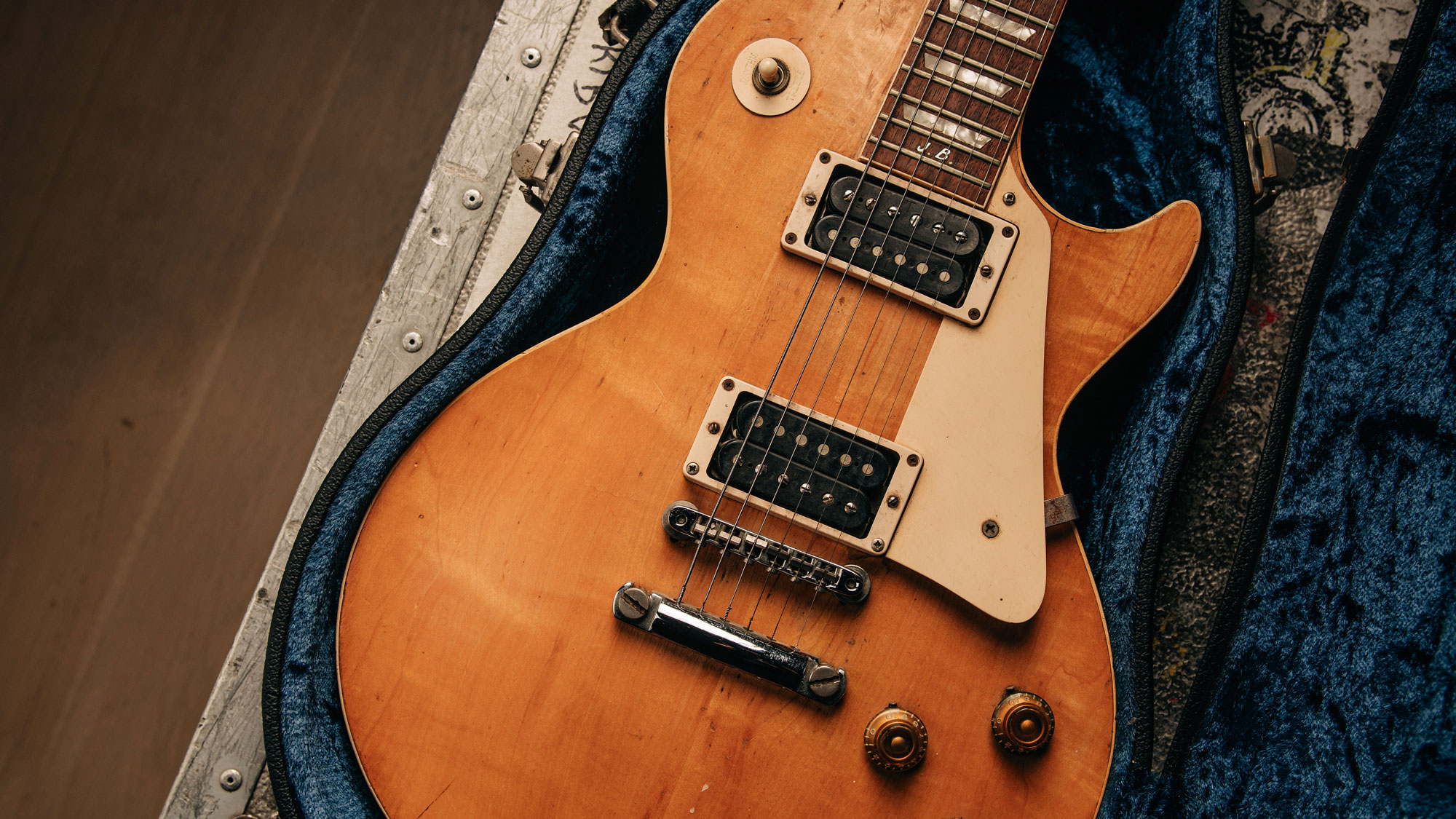

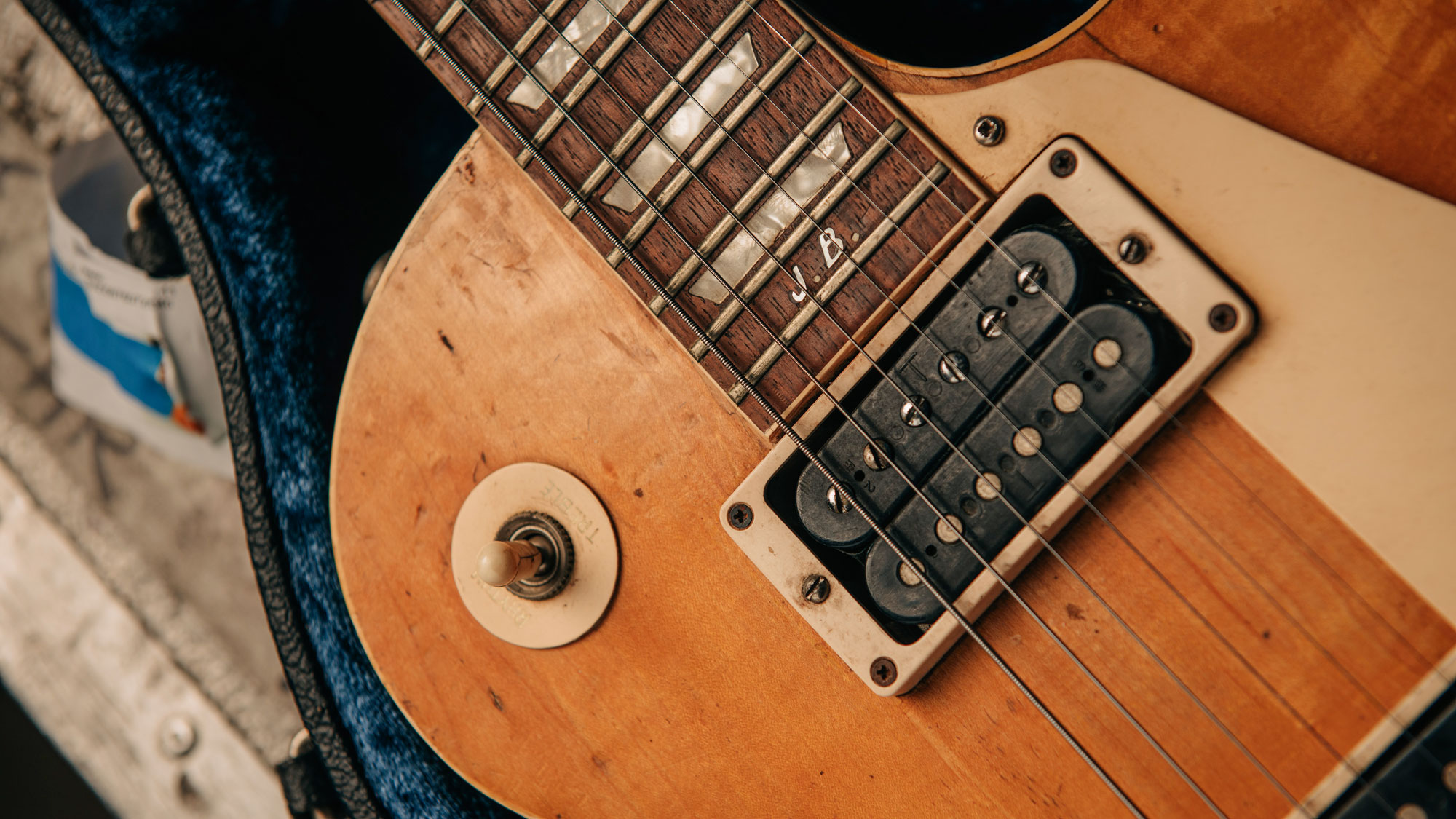
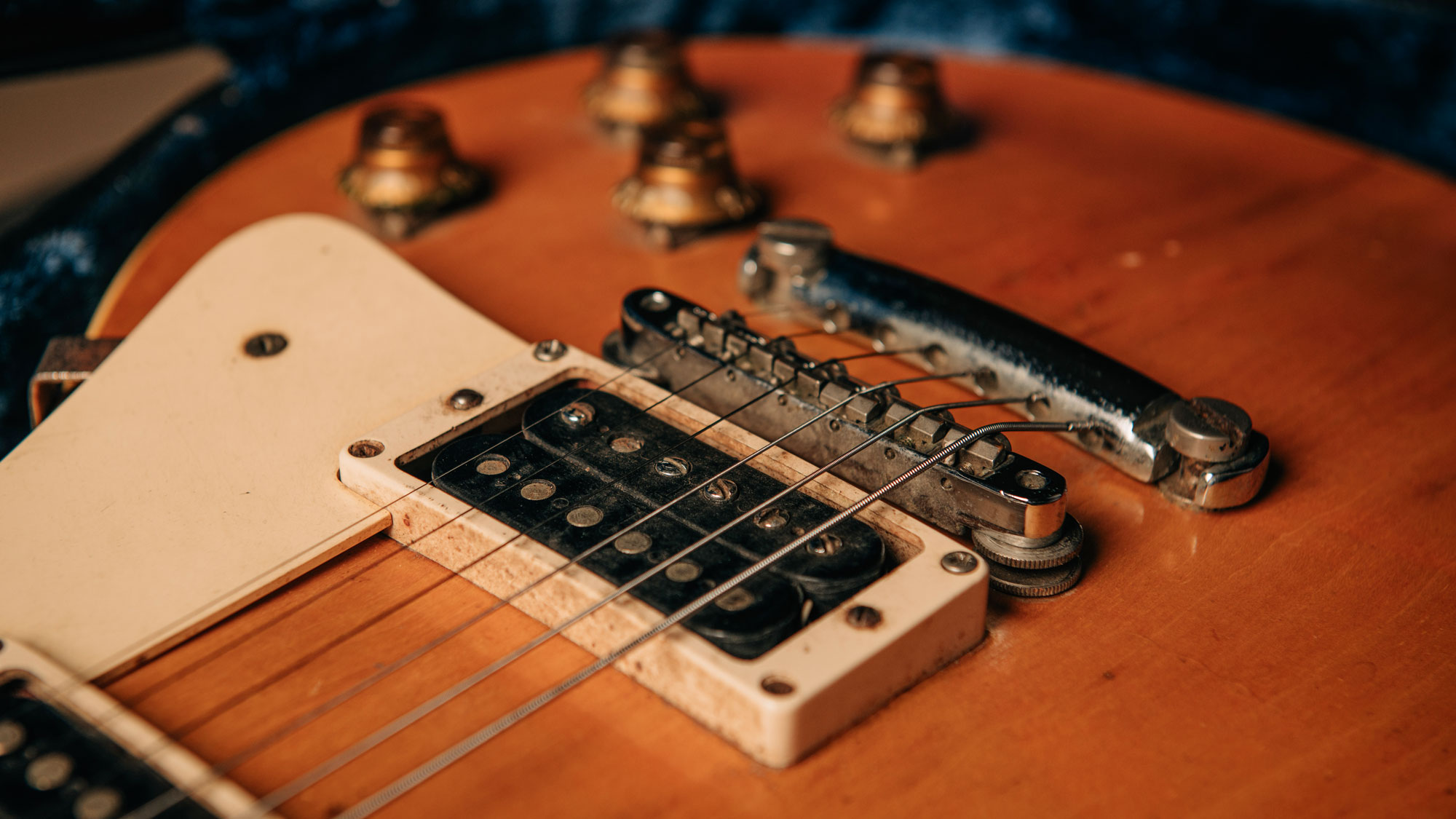
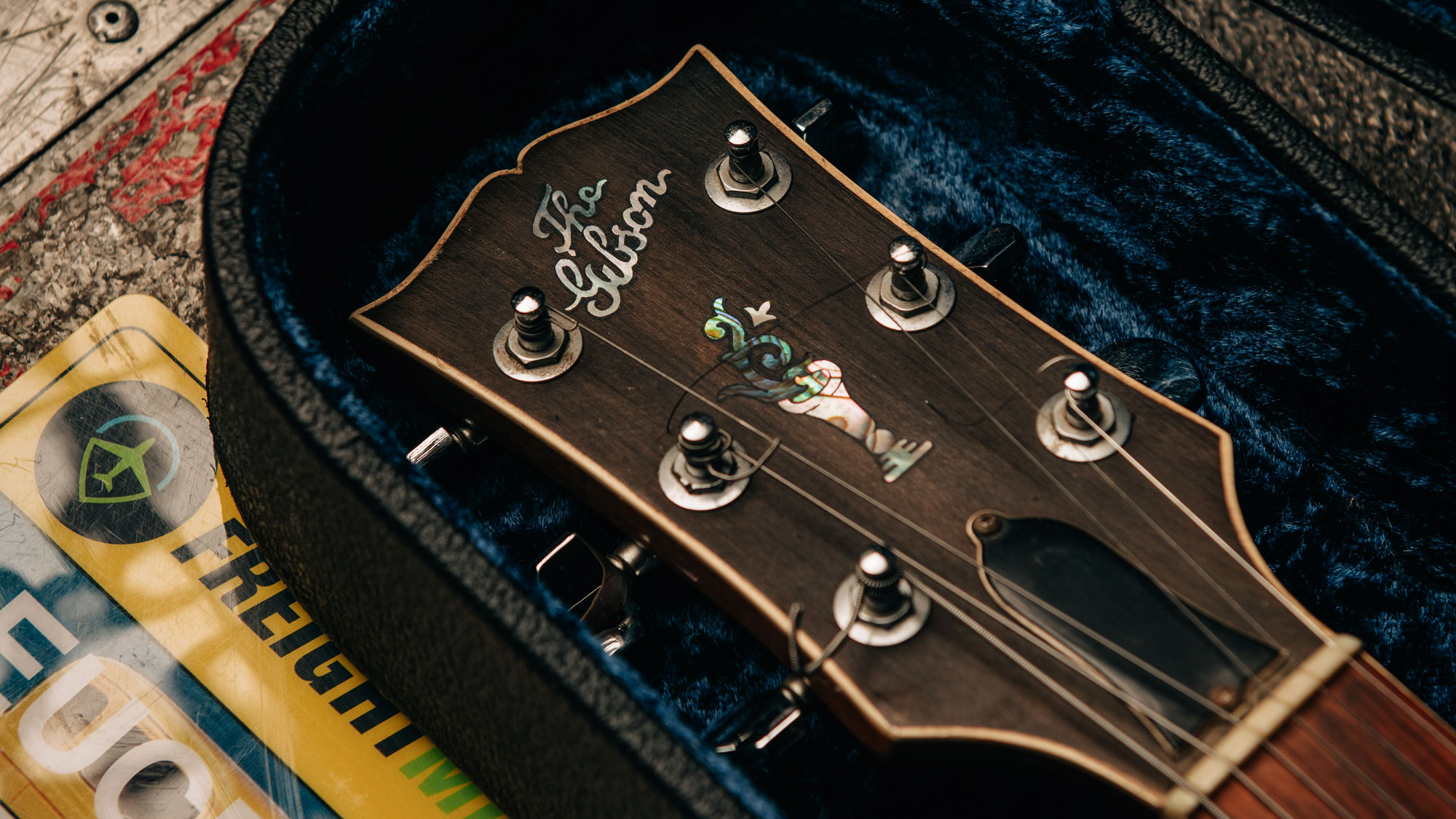
Your thoughts, Kerry? What’s your perspective on this one, as opposed to ‘Oxblood’?
Kerry: “Again, both double blacks in there…”
Amelia: “I think they’re patent‑granted ones.”
Kerry: “Yeah, they had patent numbers… and late‑60s style chassis screws. The potentiometers and ‘Bumblebee’ capacitors all look original to ’59.”
Amelia: “The PAFs were taken out in 1968, I think. Actually, that was Seymour Duncan’s reason for wanting to make Jeff the ‘Tele-Gib’ because he felt so sad for Jeff that he didn’t have PAFs any more in a guitar that he owned, that he wanted to create something for him. Which I imagine is your next question…”
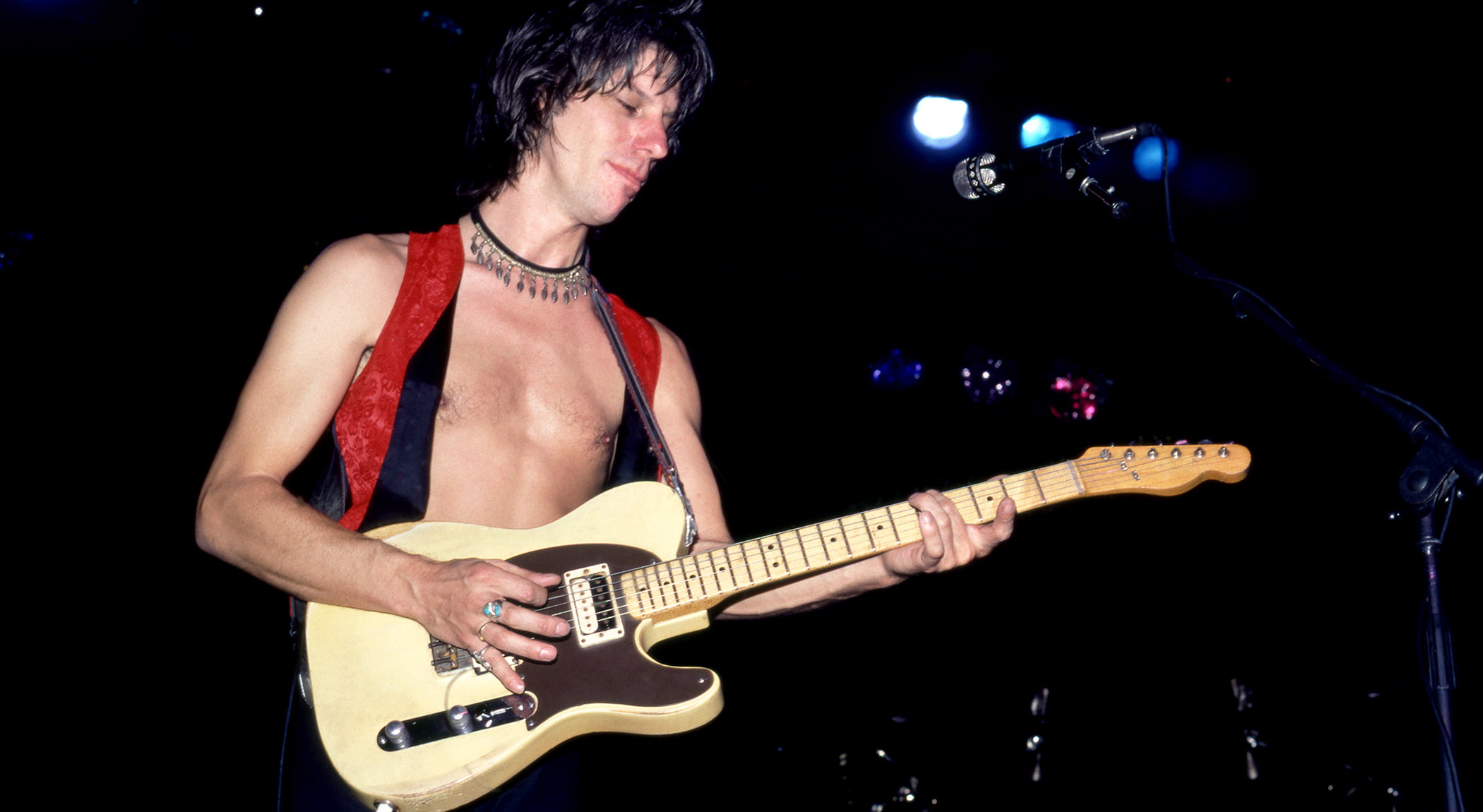
Well, yes, that’s a good moment to segue to the ‘Tele-Gib’.
Amelia: “I think from when we spoke to Seymour – who’s a lovely man – he really, genuinely wanted to create something for Jeff that Jeff would like to play. He knew that Jeff loved the lightness of the Tele body but wanted the fat sound of the Gibson and the fat frets. I think he put Gibson jumbo frets in the fingerboard; the body and the neck are effectively one date, the same guitar, but he just redid the fingerboard and put new, big frets in.
“Jeff loved the guitar, I think. By all accounts, he thought it was a great-sounding guitar. He used it straight away on Blow By Blow, in Cause We’ve Ended As Lovers. So, yeah, it’s a unique ‘Frankenstein’ from that point of view. And the pickups that [Seymour] made for him also had their own story in that they’d come out of a Flying V that used to belong to Lonnie Mack, who Jeff also loved.
“Seymour said he rewound them, but they were effectively those pickups, so they are PAFs. Then they, themselves, formed the basis of what Seymour then developed as his own JB and JM model pickups.”
There’s an interesting split personality thing with Jeff Beck, between his love of Fenders – especially his finely expressive playing on the Stratocaster – and the more muscular playing he did with Les Pauls. Do you feel that that’s reflected in the collection, those contrasting facets of his musical personality?
Amelia: “There’s a variety. There are definitely a lot of Strats because the Strat was his tool, particularly in the last 25, 30 years, but he’d definitely got the range [of sonic tools available to him], I’d say.”
Kerry: “When you look at his collection as a whole, you can see here’s a virtuosic player who played his instruments to destruction. Really, he played them hard, and when they were played out, he moved on to another. There are these epochs of performance periods where he has dialled into one instrument specifically, and when that instrument literally gets played out, he’s moving on to something else…
“I thought about this. He’s a lot like Les Paul and so it’s no great surprise to me that Les Paul was one of his heroes. Jeff Beck is always looking to change [and enhance] tonal quality, constantly. He’s always searching for a new sound, and being inventive in the way he produces that sound, either physically with the guitar or by incorporating different circuitry and electronics. It’s never-ending.”
Caitlin: “I don’t think he played anything that was standard [laughs]. I think he loved hot-rodding cars and he loved hot-rodding guitars. But I think the Les Pauls are very much tied to his earlier career. Then, when he started switching to Strats, that was it; it was true love with the Strats.
“That was his primary tool after that, partly inspired by Jimi Hendrix. And I think he’s quoted as saying that the Les Pauls made him sound like somebody else. It was a great sound, but he didn’t 100 per cent feel himself with the Les Pauls. With the Strats, it was his true voice.”
Amelia: “I’d say that the one instance where he comes back to Les Pauls is when he’s paying tribute to Les Paul.”
Caitlin: “Yes – although he definitely never gives up the Les Pauls completely, or the Gibsons as a whole.”
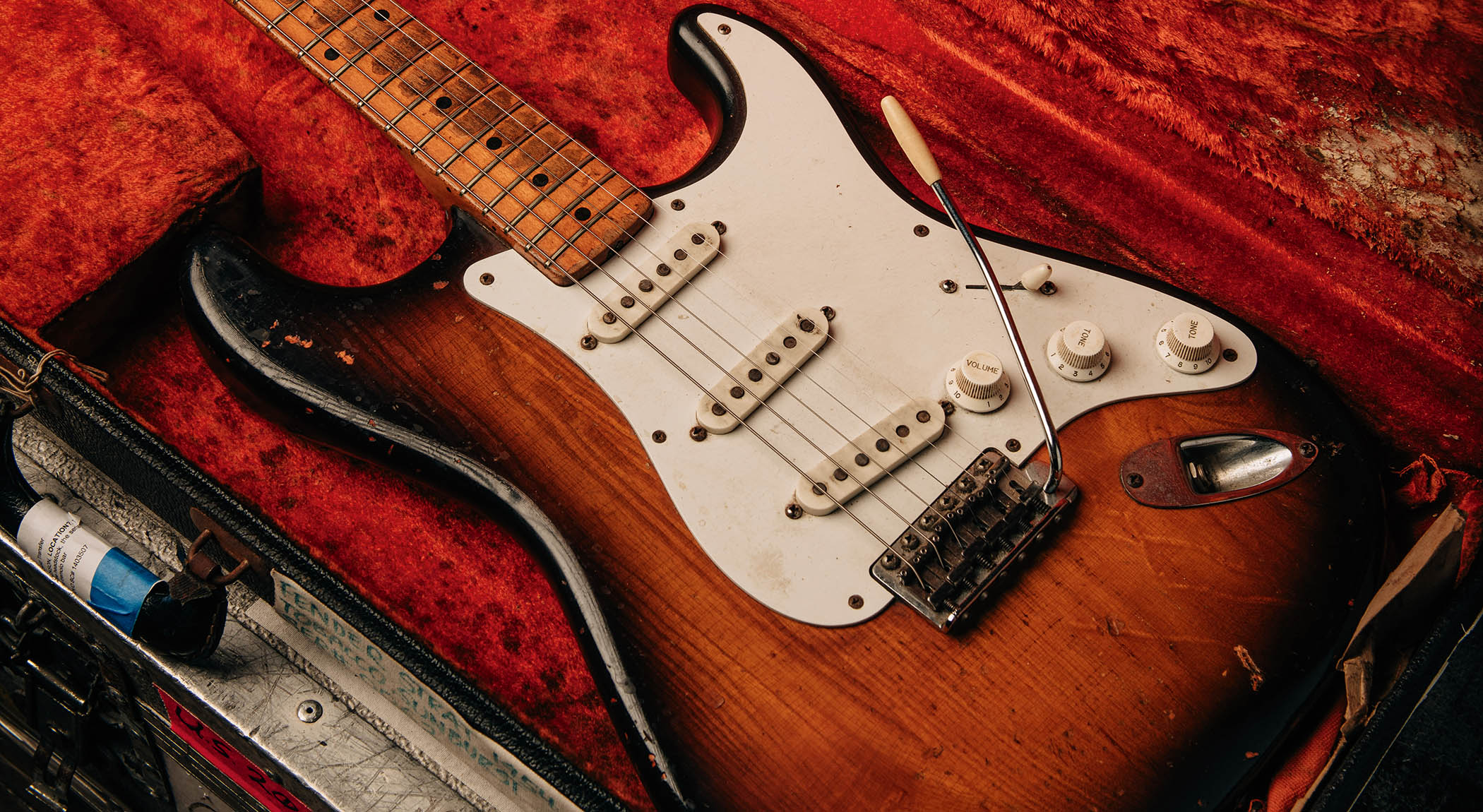
This might be a good point to discuss the ’54 Strat that’s in the sale. In our experience, original first-year-of-issue Strats – which were almost working prototypes early on – can sound more bright, edgy and hot than the classic Strat sound we know and love today. What’s this one like?
Kerry: “From my [examination], I think it’s from later in ’54 and so we’ve got a guitar, I think, where those contours are really coming into play.
“Though you’re right: the tonal quality of the early Strats sounds tonally parallel to what you’d hear from a Telecaster. That’s the type of sound that Leo’s customers wanted – it was that twang, without a doubt, and with a very hard bite. So that’s not surprising at all to me.”
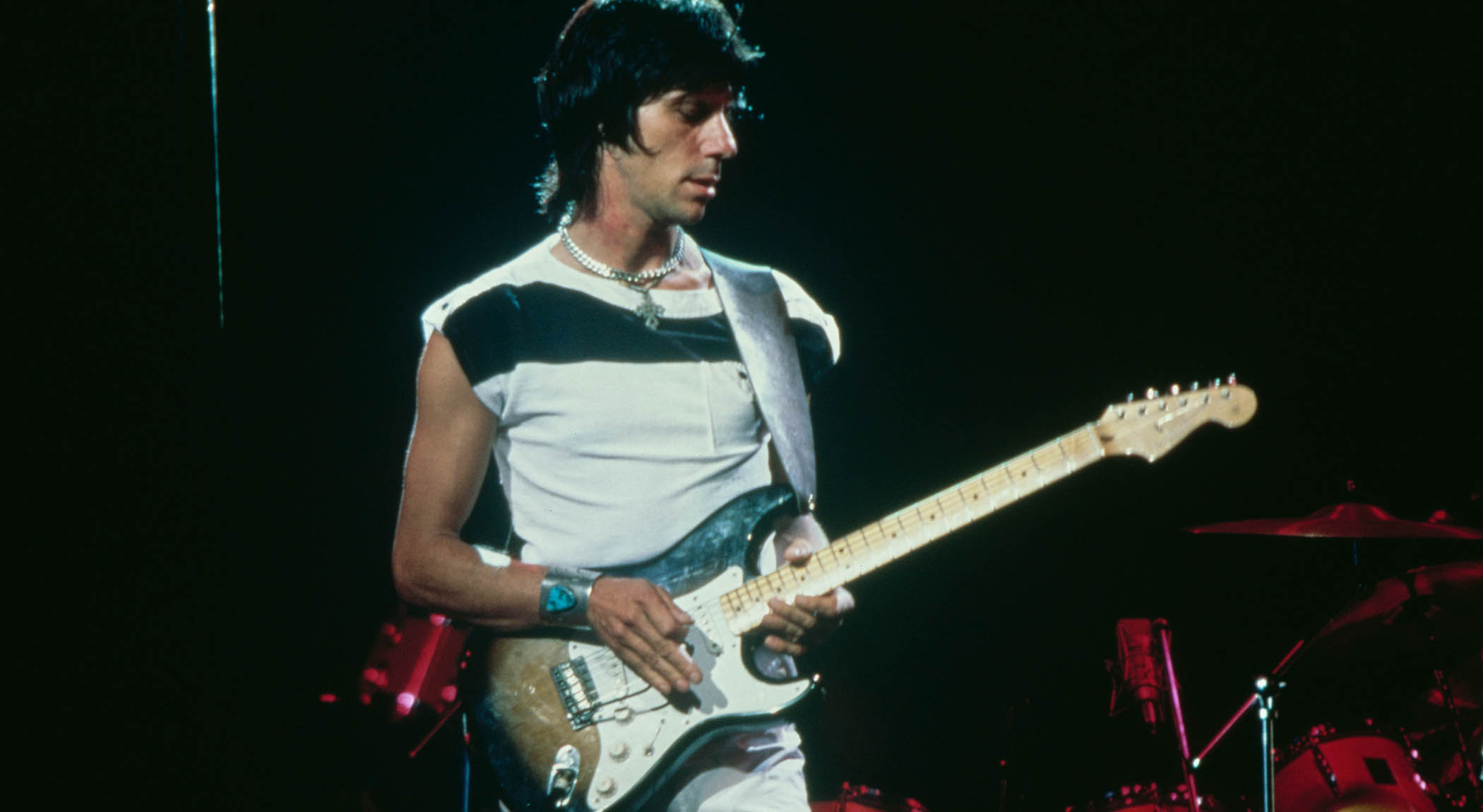
How did this particular guitar come into Jeff’s ownership?
Amelia: “The date is slightly opaque at the moment, but he got it after a particularly hard session with Stevie Marriott, who gave it to him. I think, by Jeff’s own account, he went back a couple of days later to check [that Marriott was still okay with this arrangement], and it was still his. When he got it from Steve Marriott, it had a Tele neck on it, which he then took off and put an old [Strat] neck that he already had onto it.
“So he had a maple Strat neck that he’d used throughout the Jeff Beck Group that had been on a stripped Strat body with a broken pickguard horn. You’ve probably seen the photos of it, but he then took that off and put it on the sunburst Strat. I think the ’54 was actually his most prized possession. He took it straight out on tour in ’77, ’78. It’s photographed extensively. He used it to record most of There And Back, the 1980 album.
“Then it makes an appearance at some various, quite big shows in London: the Secret Policeman’s Ball in ’81, and the ARMS Tour for Ronnie Lane in 1983, where you see Eric, Jimmy [Page] and Jeff all on stage together for the first time. But then, I think, he didn’t want it to get stolen. He suffered from so many guitars being stolen in the ’70s that, after that, I don’t think it goes out very much, if at all. I think it stays at home.”
Caitlin: “Yeah, he very much was not precious about his guitars, and definitely saw them as tools, but he seems to have been slightly more precious about this one, although perhaps not at the beginning because we have seen photographs of him using it as a pogo stick! But at some point he decides that it’s his pride and joy and doesn’t want to let it out of his sight and out on tour. He actually replaces it with a reissue that he starts using live.”
Kerry: “What’s interesting is that so many players work with three tremolo springs [in their Strats]. But Jeff Beck, who was a master of bending tone and sound with the tremolo, left all four springs in there. Which makes it, as you know, so much more of a physical endeavour.
“You listen to a recording and it’s all so wonderful, but then you start to watch videos and film clips of him playing, and how smooth and quick and tactile he was with his right hand, working controls and the tremolo. It’s like it happens in a flash and he has changed the timbre of the instrument.”
Many of the guitars have been modded in rather idiosyncratic ways to suit Jeff’s musical needs. Do you think the collection paints a portrait of a man who wasn’t a collector per se but who acquired guitars pragmatically?
Amelia: “Yeah, I think he got them when he needed them. It was very pragmatic.”
Kerry: “I think, of all the collections I’ve worked on, Jeff Beck more than anyone else viewed these instruments truly as just tools; they weren’t precious at all. With David Gilmour’s magnificent collection [which Kerry prepared for auction in June 2019], he was very curatorial in how he approached it.
“The same with Mark Knopfler, the same with Eric Clapton. But with Jeff Beck, no. It [the guitar] was a tool; it was a means to an end. It was how he completed his musical journey – by getting the right tool and doing it.”
The pink Jackson – as incongruous as its pointy headstock may seem in this company – is probably another example of that.
Jeff Beck more than anyone else viewed these instruments truly as just tools; they weren’t precious at all
Kerry: “Yes, a true Californian pointy guitar, as you say….”
Amelia: “He was given it by Grover Jackson at the ARMS concert in Madison Square Garden in 1983, when they took the tour over to America.”
Caitlin: “But he had actually said that he had that as the spare for the Steve Marriott vintage Strat… He got the pink Jackson to use on the road because he didn’t want to get the Marriott Strat damaged.”
Amelia: “It got a lot of use in that period of ’83 to ’85 – it got a lot of use on sessions with other artists. It has a Kahler bridge that I think enabled him to do more [finely expressive] bends.
“I think I remember reading somewhere that he said that the Marriott Strat was like a beauty: it sings to you if you get it right, but it had a habit of going out of tune. Then, of course, Tina Turner signed it with a flick knife after he recorded for her in London. Then they all went out to dinner [laughs].”
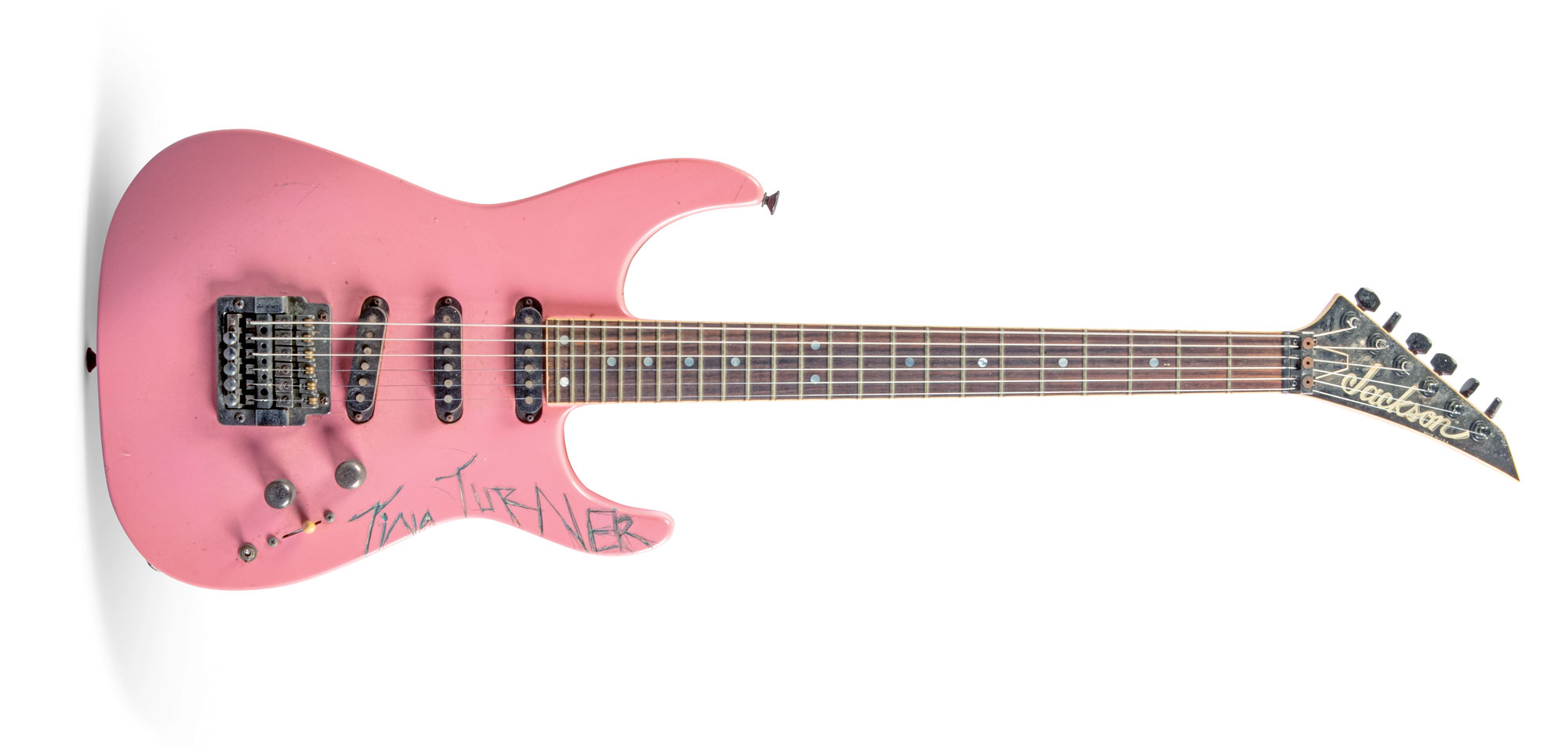
In more recent years, of course, Jeff settled into more of a regular pattern of using white Strats built to his preferred spec – and there are a number of those in the sale. Do these later Fenders settle on a particular spec or do they indicate his evolution of tone was ongoing at the time of his passing?
Caitlin: “Yes, he used different white Strats and different tunings for different songs. So there are actually a number of opportunities for bidders to acquire a Jeff Beck white Strat because there’s more than one.”
Amelia: “They’re very different from the signature series [production models], I would add, and they were all Custom Shop-built for him with a nut [design] that doesn’t exist on the signature series, and often they are reverse headstock – or there’s a marriage of an earlier style of neck that he’d had made in the ’90s by JW Black with a Todd Krause body because he liked the pairing. So there are a lot of interesting combinations in those as well.”
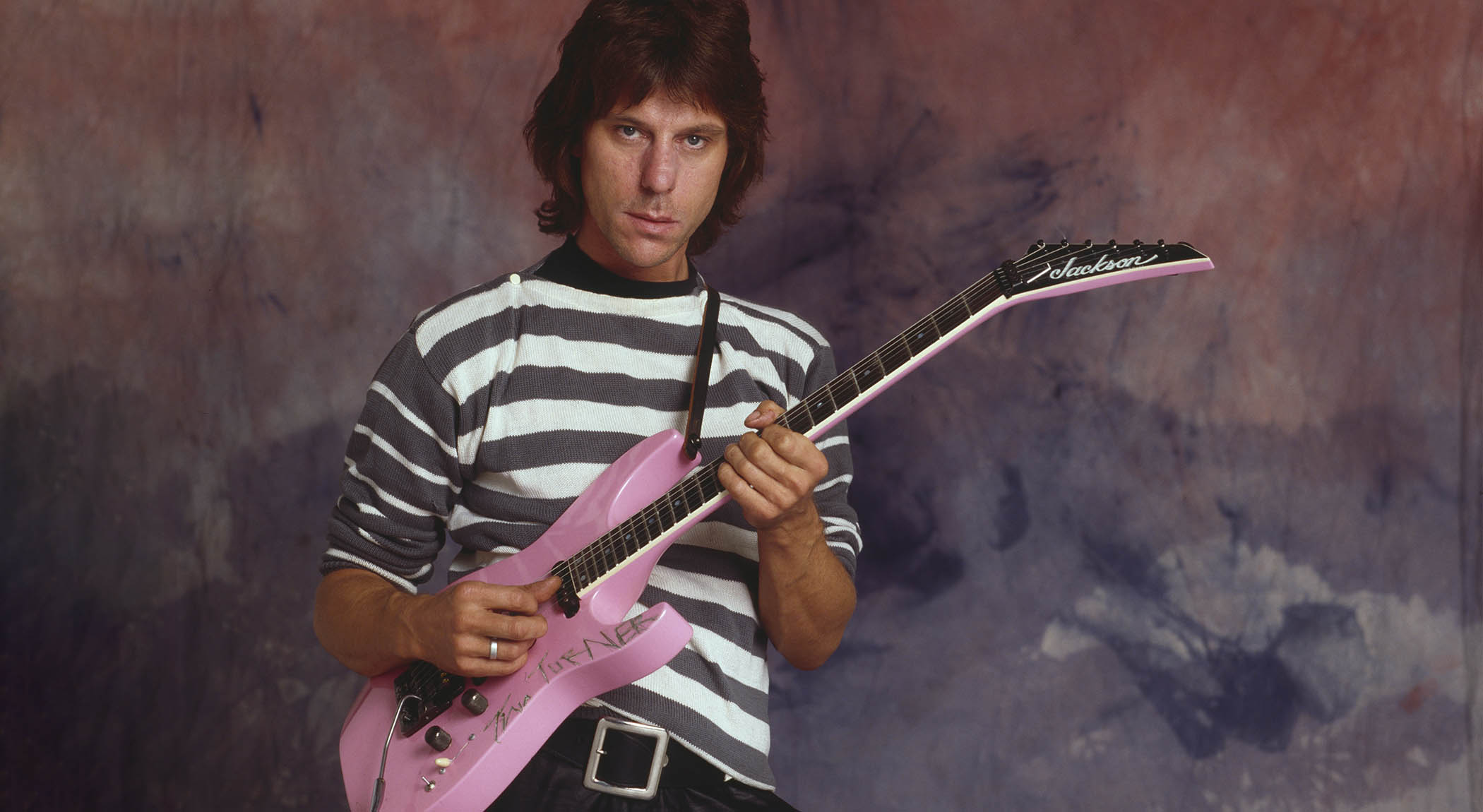
Kerry: “And [non-standard] wiring harnesses. Again, the guitar techs were switching parts back and forth.”
Caitlin: “That’s one thing that has been quite tricky for us in putting this together – he definitely switched necks around a lot. And he had a number of guitar techs over the years, so the stories have [been verified with] various different guitar techs along with the various different modifications, and getting to the bottom of exactly the history of each guitar was quite a journey.”
Kerry: “What was brilliant of [Jeff’s tech] Steve Prior was that he wrote on the back of the pickguards what was changed, when it was mounted and where. So there’s this wonderful story to be told whenever you pull one of the pickguards off of the Strats [that Steve worked on].”
Amelia: “Sometimes Jeff did it himself [laughs].”
- Jeff Beck: The Guitar Collection goes under the hammer in a live auction on 22 January 2025 at Christie’s in London. For more information, see Christie's.
Jamie Dickson is Editor-in-Chief of Guitarist magazine, Britain's best-selling and longest-running monthly for guitar players. He started his career at the Daily Telegraph in London, where his first assignment was interviewing blue-eyed soul legend Robert Palmer, going on to become a full-time author on music, writing for benchmark references such as 1001 Albums You Must Hear Before You Die and Dorling Kindersley's How To Play Guitar Step By Step. He joined Guitarist in 2011 and since then it has been his privilege to interview everyone from B.B. King to St. Vincent for Guitarist's readers, while sharing insights into scores of historic guitars, from Rory Gallagher's '61 Strat to the first Martin D-28 ever made.
You must confirm your public display name before commenting
Please logout and then login again, you will then be prompted to enter your display name.
“I heard the Money solo and thought, ‘This is amazing!’ So I sent David a telegram saying, ‘Remember me? I'm in a band now called Roxy Music’”: Phil Manzanera on his friendship with David Gilmour, and the key to the Pink Floyd man's unmistakable tone
“It’s really quite genius, but also hard to learn – it sounds insane, but sometimes the easiest songs still get me nervous”: Kiki Wong reveals the Smashing Pumpkins song she had the most trouble with















